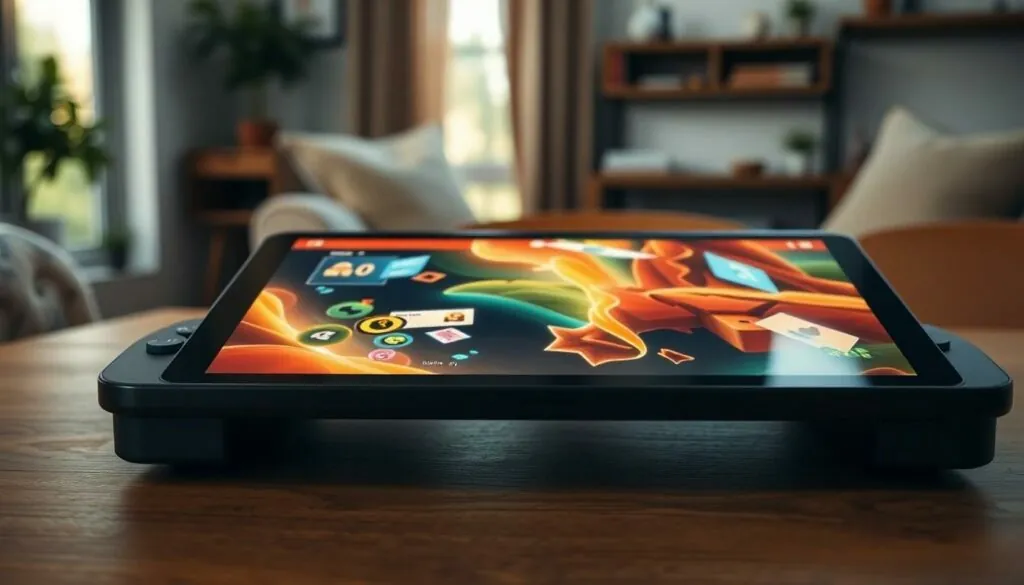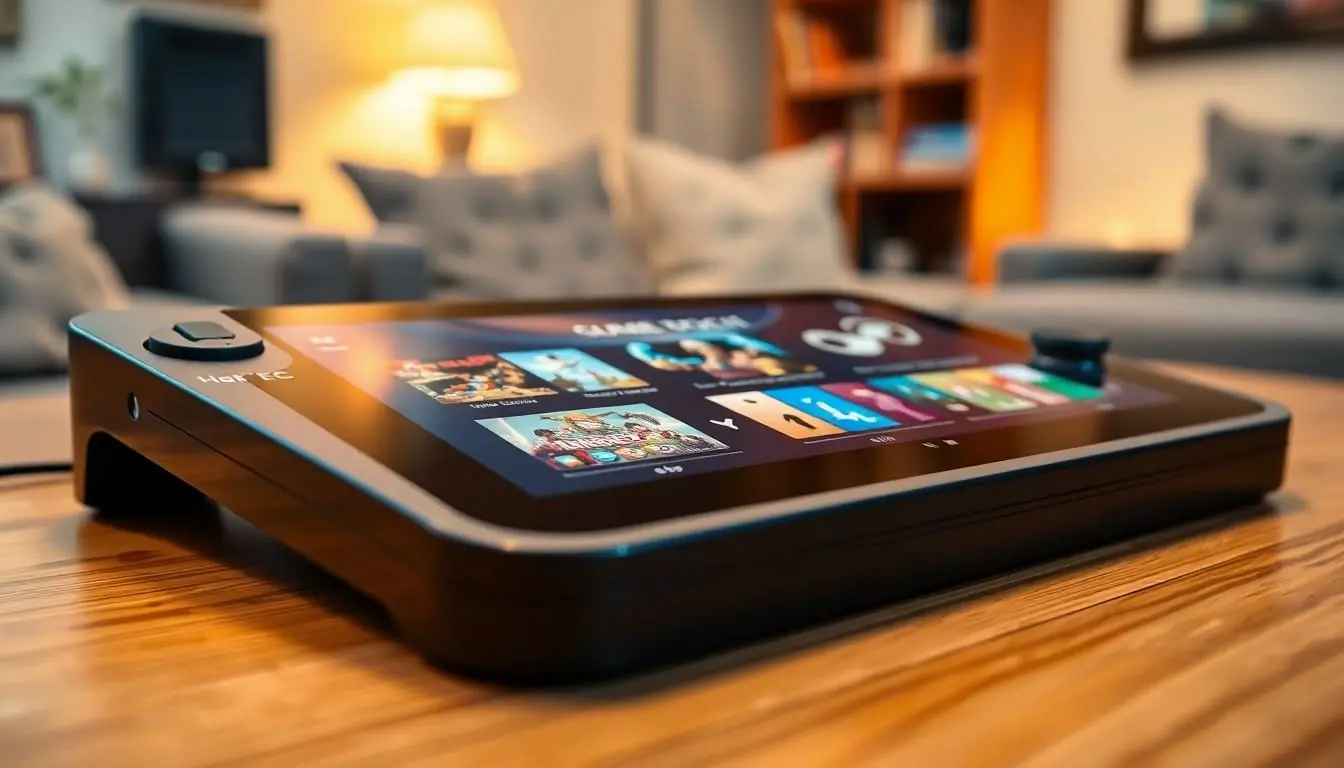The Steam Deck has taken the gaming world by storm, but what if it could do even more? Imagine a sleek handheld device that not only lets players dive into their favorite titles but also responds to their every swipe and tap. Yep, that’s right! The Steam Deck touchscreen is here to elevate the gaming experience to a whole new level.
Gone are the days of fumbling with buttons while trying to navigate menus. With a touchscreen, gamers can enjoy smoother interactions and quicker responses, making gameplay more intuitive and fun. It’s like upgrading from a flip phone to a smartphone—once you’ve tried it, there’s no going back! So, buckle up as we explore how the Steam Deck touchscreen can transform your gaming sessions from good to absolutely legendary.
Table of Contents
ToggleOverview of Steam Deck Touchscreen
Steam Deck introduces a touchscreen feature that enhances user interaction. This touchscreen allows gamers to navigate menus effortlessly and select options quickly. Enhancement of accessibility significantly improves the overall gaming experience. With this capability, players can control gameplay without relying solely on physical buttons.
The touchscreen supports multi-touch gestures, which enable actions like pinch-to-zoom and swipe. These features offer smoother interactions, fostering a more immersive environment. Integrating the touchscreen with existing controls provides versatility that appeals to different gaming preferences.
Developers can design games that take advantage of this feature, leading to innovative gameplay mechanics. For instance, strategy games might use the touchscreen for map navigation, enabling quick decisions during intense moments. Users also express positive feedback about how the responsiveness of the touchscreen complements traditional controls.
Considering the popularity of mobile gaming, the inclusion of a touchscreen positions the Steam Deck competitively. Gamers expect modern devices to integrate touch functionality, enhancing convenience and efficiency.
Overall, the touchscreen elevates gaming sessions, catering to users who value intuitive interactions. As players embrace this advancement, experiences are likely to evolve, setting new standards across the industry.
Features of the Steam Deck Touchscreen
The Steam Deck’s touchscreen brings notable capabilities that enhance gameplay and user experience. This feature adds a layer of functionality that distinguishes it in the competitive gaming market.
Touch Sensitivity
Touch sensitivity plays a crucial role in the Steam Deck’s touchscreen experience. High responsiveness allows users to interact with games and menus seamlessly, enabling quick selections and fluid navigation. Players notice minimal lag during interactions, making actions feel instantaneous. Pressure sensitivity enhances gameplay, particularly in genres like drawing or puzzle games, where precision matters. Developers can explore creative uses for this feature, potentially introducing gameplay mechanics tailored to touch interactions. Users appreciate a tactile feedback mechanism that reinforces target selections, improving overall satisfaction.
Display Quality
Display quality significantly impacts user engagement on the Steam Deck. The touchscreen employs high-resolution technology, ensuring vibrant colors and sharp details that enhance visual immersion. Gamers enjoy a wide viewing angle, maintaining clarity from various positions. This clarity allows for a more enjoyable experience when navigating intricate game menus or landscapes. Anti-glare protection minimizes reflections in bright environments, promoting consistent visibility. With its responsive display, the Steam Deck meets modern gaming expectations, providing the visual quality gamers crave.
User Experience with Steam Deck Touchscreen
The Steam Deck’s touchscreen feature significantly enhances user experience in gaming and productivity applications. This upgrade makes interactions smoother and more intuitive.
Gaming Performance
Gaming performance benefits greatly from the touchscreen’s capabilities. Players can navigate menus quickly and utilize multi-touch gestures like pinch-to-zoom and swipe, enabling fast access to game controls. Precision becomes critical in genres such as strategy and adventure, where swift map navigation and command execution are essential. High touch sensitivity allows gamers to react instantly, minimizing frustration during intense gameplay. The high-resolution display complements the touchscreen, delivering vibrant visuals and ensuring that every detail stands out. Overall, the enhanced gameplay experience keeps players engaged and attentive.
Productivity Applications
Beyond gaming, productivity applications gain momentum with the Steam Deck touchscreen. Users find it effortless to scroll through documents and manage tasks using touch gestures. Essential functions like selecting text or resizing images become more fluid and natural, improving overall efficiency. Applications that require quick navigation, like spreadsheets or note-taking tools, showcase the touchscreen’s versatility. Developers can adopt this feature to simplify user interfaces, making software more accessible for everyone. This integration not only optimizes performance in work-related tasks but also aligns with the contemporary expectation for smart devices.
Comparison with Other Handheld Devices
The Steam Deck’s touchscreen feature provides a unique advantage over other handheld gaming devices. Nintendo Switch, while highly popular, lacks the same level of touchscreen integration for gameplay. Users of the Steam Deck experience richer interactions thanks to multi-touch gestures, which enhance gameplay dynamics beyond what competing systems offer.
Handheld devices such as the Xbox Cloud Gaming and Razer Edge incorporate touch functionality, yet they don’t fully capitalize on it for gameplay. The touchscreen on the Steam Deck allows for precise navigation and quicker access to options, which is especially beneficial for strategy and adventure games. Players gain a competitive edge through this enhancement, making it easier to engage in complex gameplay scenarios.
High-resolution displays set the Steam Deck apart from other devices. While some competitors provide quality graphics, the vibrant colors and sharp details on the Steam Deck lead to a more immersive experience. Users appreciate the anti-glare protection that ensures visibility in various environments, another aspect that enhances its appeal compared to other devices.
Productivity benefits also distinguish the Steam Deck in the handheld market. Other devices offer basic functionality, but the Steam Deck’s touchscreen allows for seamless document navigation and task management. Those relying on their handheld devices for productivity find the Steam Deck’s integration of gaming and work features exceptional.
Ultimately, the Steam Deck’s touchscreen elevates the user experience in both gaming and productivity. Competitors might provide standalone gaming capabilities, yet none combine these elements quite like the Steam Deck, setting a new standard for handheld devices in the industry.
Conclusion
The Steam Deck’s touchscreen feature marks a significant leap forward in handheld gaming. By offering seamless navigation and intuitive interactions it transforms the way players engage with their favorite titles. The high-resolution display and advanced touch sensitivity not only enhance gaming experiences but also improve productivity tasks.
As developers embrace this technology the potential for innovative gameplay mechanics expands. This evolution sets the Steam Deck apart from competitors by combining gaming and productivity in a single device. With the touchscreen’s capabilities players are likely to find themselves immersed in a more dynamic and responsive environment. The Steam Deck is truly redefining expectations for handheld gaming devices in today’s market.






